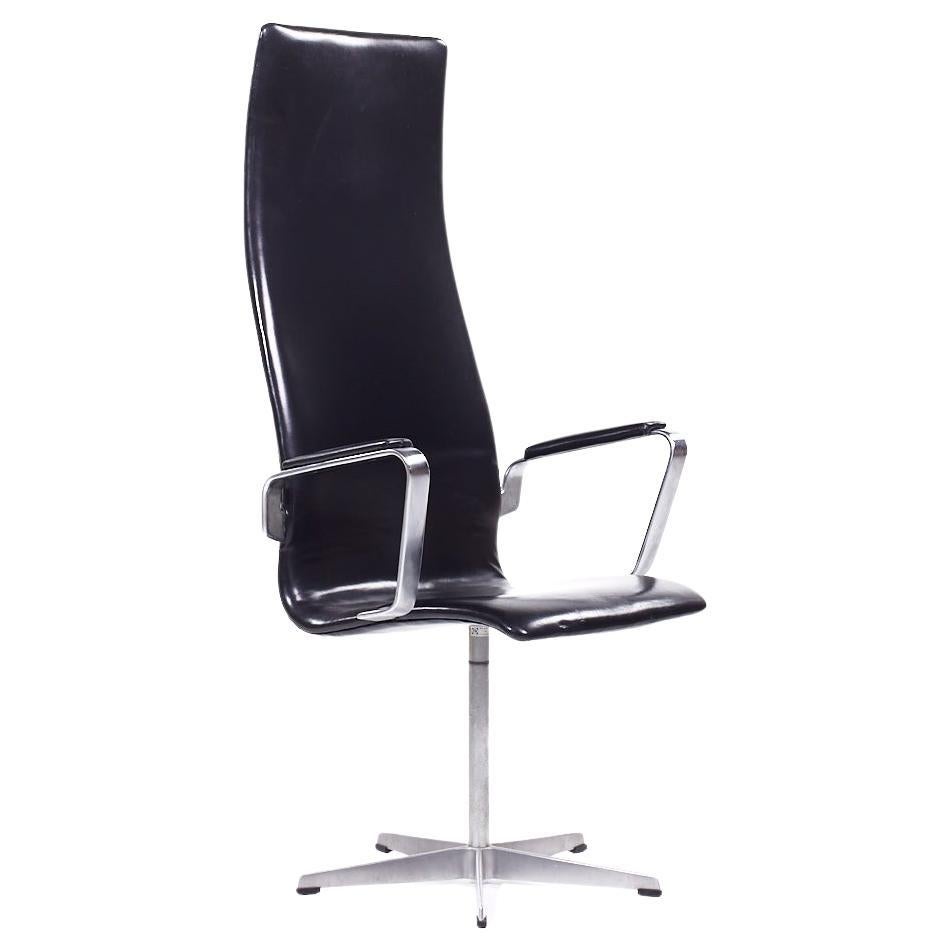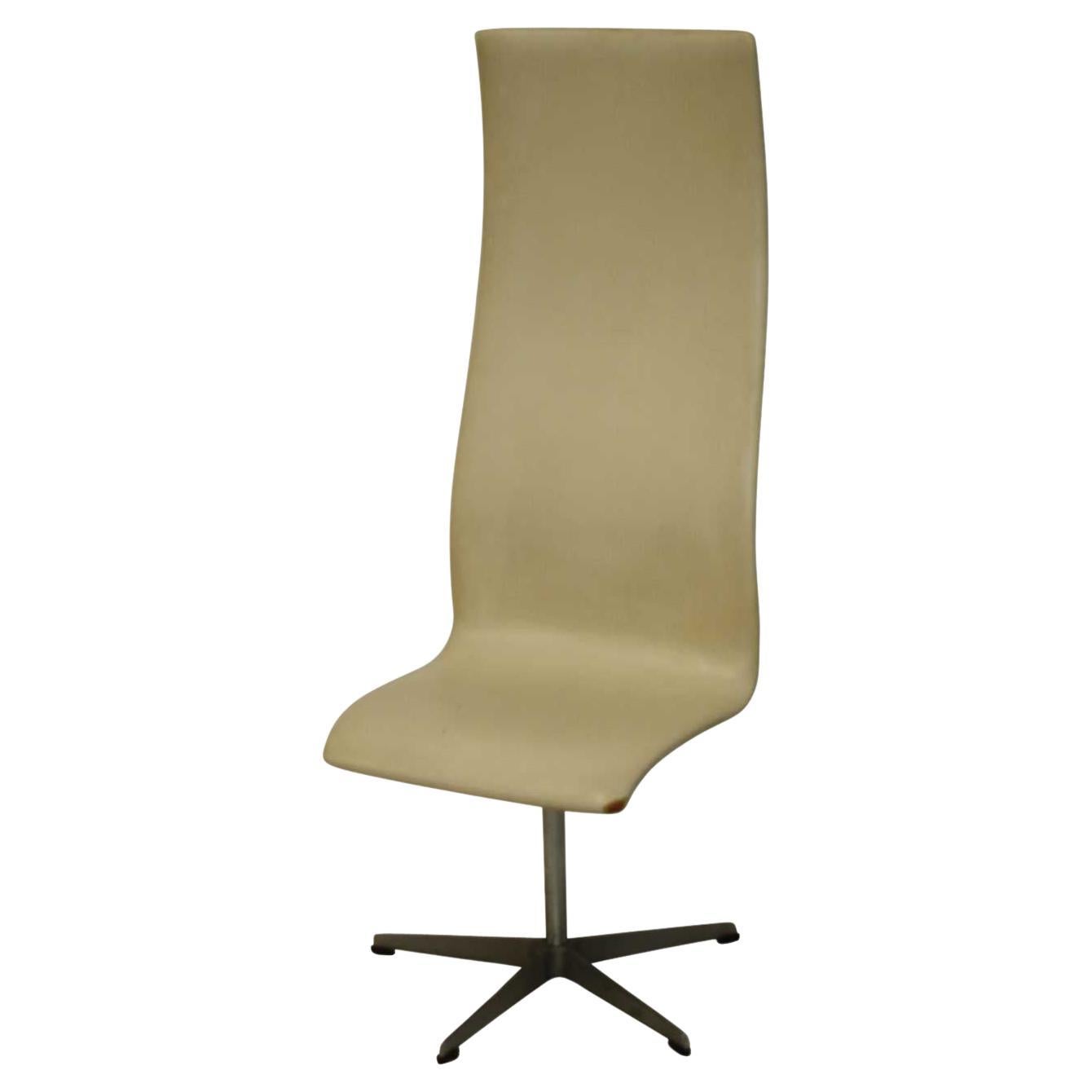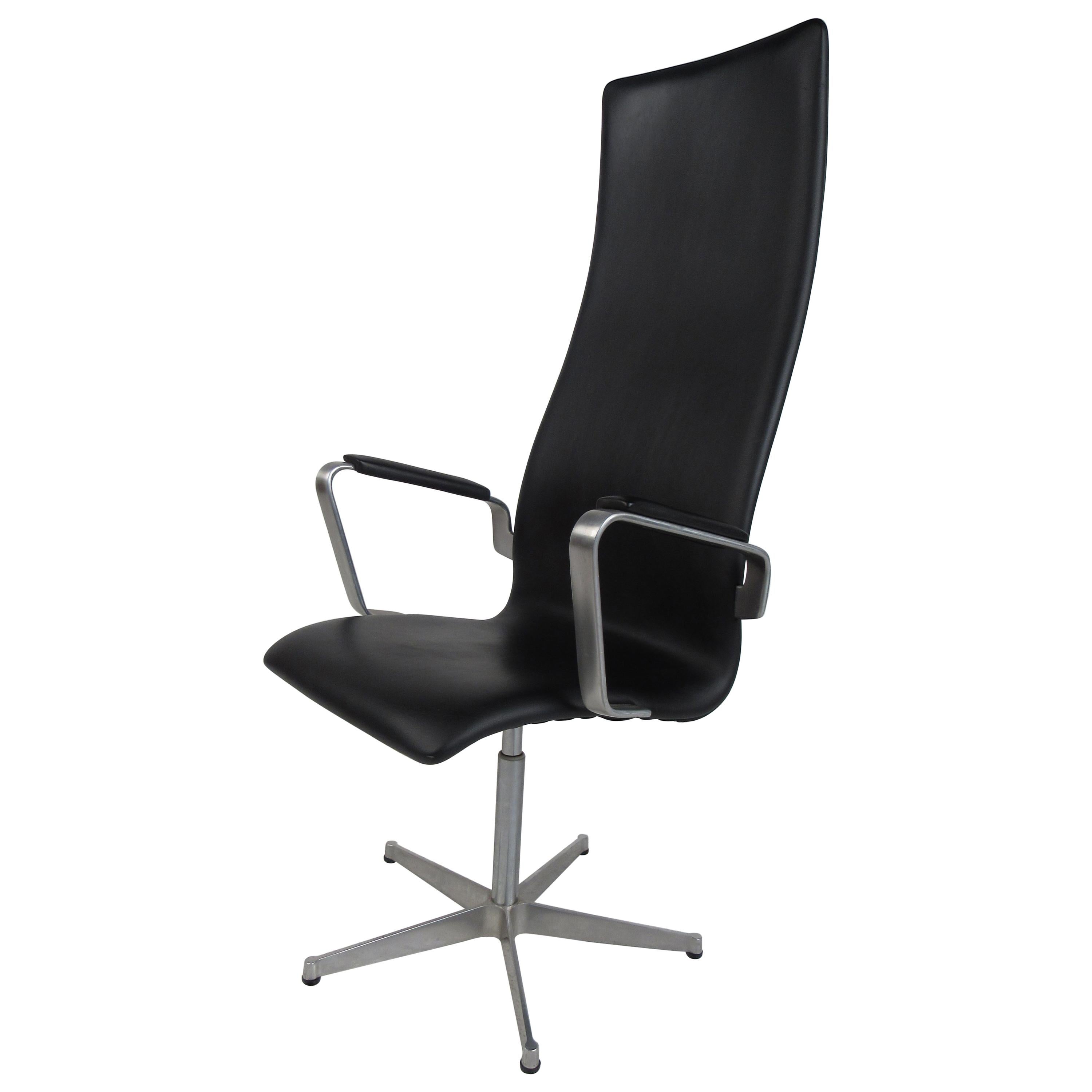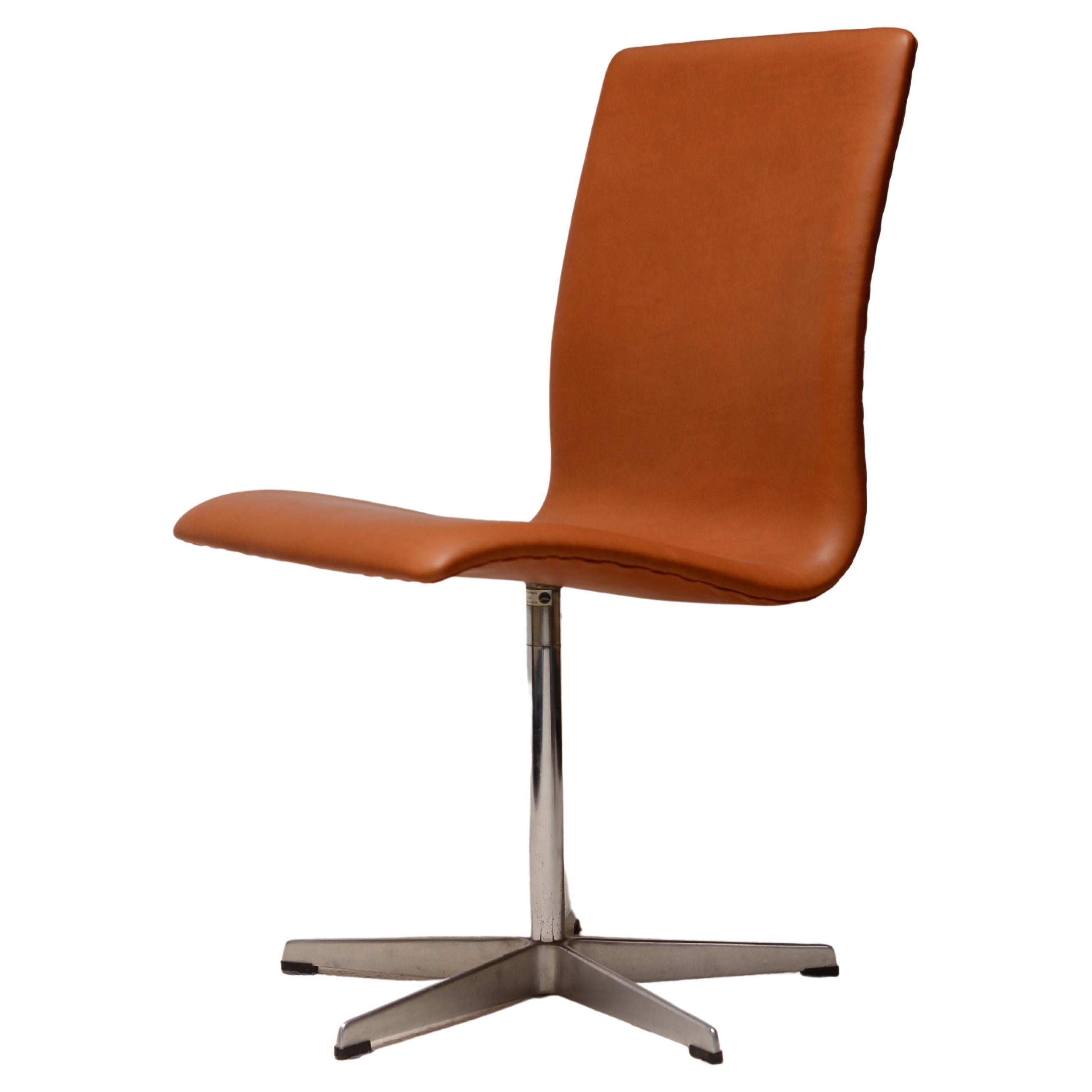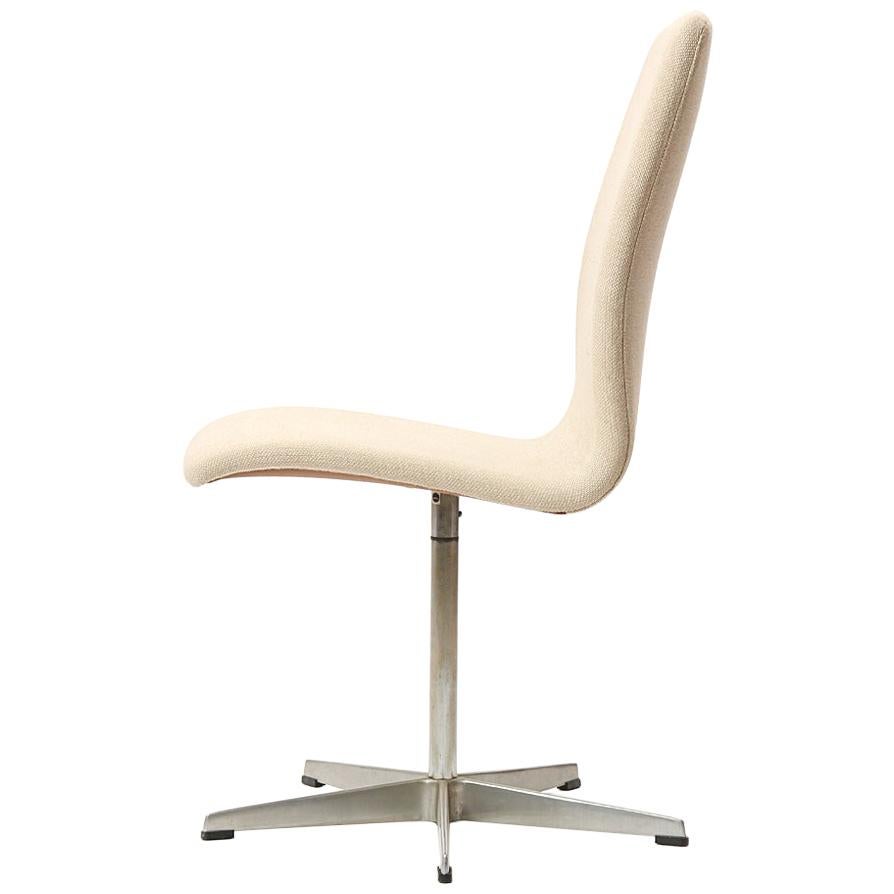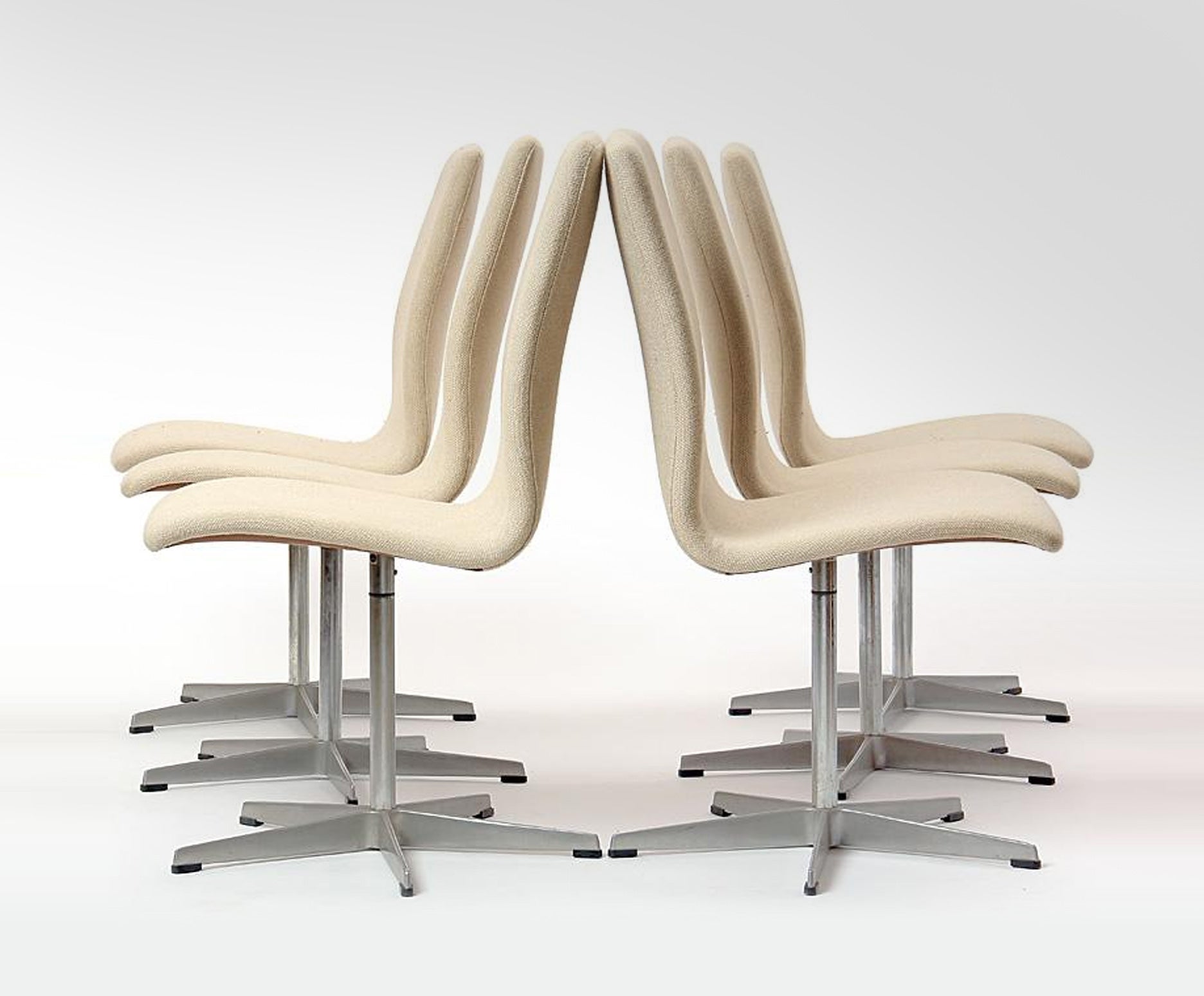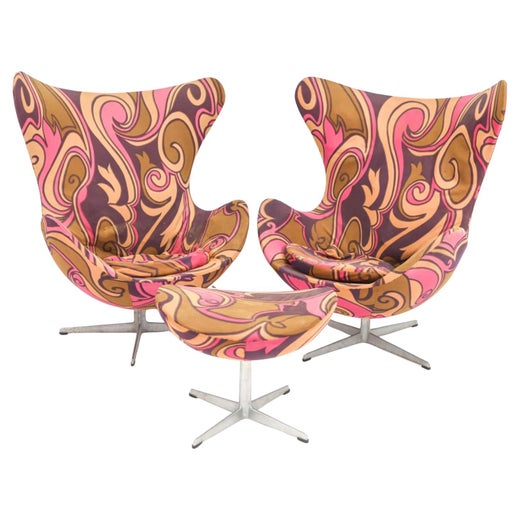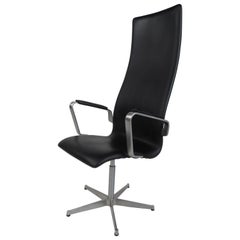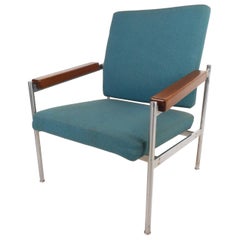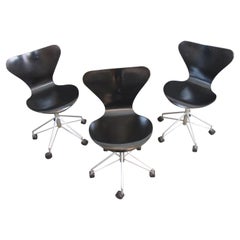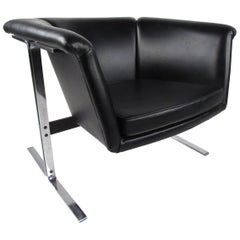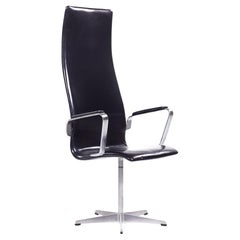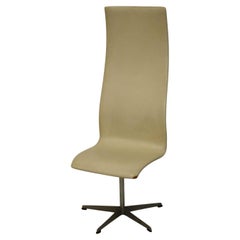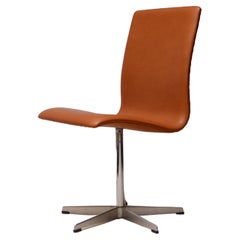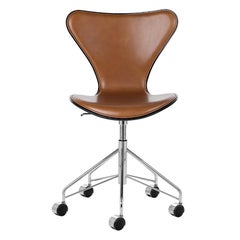Oxford High Back Swivel Lounge Chair by Fritz Hansen
About the Item
- Creator:Arne Jacobsen (Designer),Fritz Hansen (Designer)
- Design:
- Dimensions:Height: 51.5 in (130.81 cm)Width: 19 in (48.26 cm)Depth: 23.5 in (59.69 cm)Seat Height: 18.5 in (46.99 cm)
- Style:Mid-Century Modern (In the Style Of)
- Materials and Techniques:
- Place of Origin:
- Period:
- Date of Manufacture:2006
- Condition:Wear consistent with age and use. Minor fading. age appropriate wear, light oxidation on base, some scuffs and indents on leather.
- Seller Location:Brooklyn, NY
- Reference Number:Seller: 1261-0697NJc1stDibs: LU921810766101
Oxford Chair
Characterized by clean lines and an application of ergonomics, the Oxford chairs in the banquet hall at Oxford University’s St. Catherine’s College suggest style and prestige, and the professors who sit in them wouldn’t have it any other way.
Celebrated Danish architect Arne Jacobsen (1902–71) created the graceful high-backed chair as part of his 1960 architectural commission to design the campus. Not unlike the work he had just completed at the SAS Royal Hotel in Copenhagen, Jacobsen’s modernist vision for what became the esteemed institution on England’s River Cherwell was all-encompassing: He created clocks, flatware and all of the furnishings for the school. In the dining hall, the students would be seated in his low, lightweight 1955 Series 7 chairs, while their teachers relaxed in the regal Oxford chairs.
Jacobsen excelled at product and furniture design, achievements that owe to his careful attention to every detail of his architectural work. A one-time bricklayer who became a leading figure in a field largely dominated by former cabinetmakers, the Copenhagen native is widely known for his sophisticated chairs.
While he was still an architecture student in 1925 at the Royal Danish Academy of Fine Arts, Jacobsen won an award for a chair he designed at the Exposition Internationale des Arts Décoratifs et Industriels Modernes in Paris. Later, in 1952, following years of executing successful architectural projects out of his own practice, Jacobsen designed his revered Ant chair, a slim and stackable piece for the employee cafeteria of a pharmaceutical company. The Ant is a modernist marvel — its one-piece plywood seat and backrest derived from the work that American designers Charles and Ray Eames had advanced in their plywood furniture making. Jacobsen’s improvements on the Ant yielded the curvy Series 7, which he utilized in his commission at St. Catherine’s College.
Made of molded sliced veneer, the fully upholstered shell of the Oxford chair produced for St. Catherine’s College was specifically crafted with a high back to offer privacy for professors as they dined at the banquet hall’s long tables. The chair was intended to symbolize the faculty’s authority over the student body. St. Catherine’s was still under construction when it officially opened in 1962, as Jacobsen didn’t complete the project until the following year. Fritz Hansen introduced the Oxford chair in 1965. In addition to the towering professorial original, it is now available in low- or medium-height versions, privacy and authority be damned.
Arne Jacobsen
The eye-catching work of the Danish architect and designer Arne Jacobsen often introduces new collectors to mid-20th century furniture. With their fluid lines and sculptural presence, Jacobsen’s signature pieces — the elegant Swan chair and the cozy-yet-cutting edge Egg chair, both first presented in 1958 — are iconic representations of both the striking aesthetic of the designers of the era and their concomitant attention to practicality and comfort. Jacobsen designed furniture that had both gravitas and groove.
Though Jacobsen is a paragon of Danish modernism, his approach to design was the least “Danish” of those who are counted as his peers. The designs of Hans Wegner, Finn Juhl, Børge Mogensen and others grew out of their studies as cabinetmakers. They prized skilled craftsmanship and their primary material was carved, turned and joined wood. Jacobsen was first and foremost an architect, and while he shared his colleagues’ devotion to quality of construction, he was far more open to other materials such as metal and fiberglass.
Many of Jacobsen’s best-known pieces had their origin in architectural commissions. His molded-plywood, three-legged Ant chair (1952) was first designed for the cafeteria of a pharmaceutical company headquarters. The tall-backed Oxford chair was made for the use of dons at St. Catherine’s College, Oxford, whose Jacobsen-designed campus opened in 1962 (while still under construction). The Swan, Egg and Drop chairs and the AJ desk lamp were all created as part of Jacobsen’s plan for the SAS Royal Copenhagen Hotel, which opened in 1960. (The hotel has since been redecorated, but one guest room has been preserved with all-Jacobsen accoutrements.)
To Jacobsen’s mind, the chief merit of any design was practicality. He designed the first stainless-steel cutlery set made by the Danish silver company Georg Jensen; Jacobsen’s best-selling chair — the plywood Series 7 — was created to provide lightweight, stackable seating for modern eat-in kitchens. But as you will see from the objects on 1stDibs, style never took a backseat to function in Arne Jacobsen’s work. His work merits a place in any modern design collection.
Find authentic Arne Jacobsen chairs, tables, sofas and other furniture on 1stDibs.
- ShippingRetrieving quote...Shipping from: Brooklyn, NY
- Return Policy
More From This Seller
View AllVintage 1970s Mid-Century Modern Swivel Chairs
Chrome
Vintage 1970s Danish Mid-Century Modern Lounge Chairs
Chrome
Mid-20th Century Danish Mid-Century Modern Office Chairs and Desk Chairs
Metal, Chrome
Mid-20th Century Dutch Scandinavian Modern Lounge Chairs
Chrome
20th Century Mid-Century Modern Swivel Chairs
Fabric
Vintage 1970s American Mid-Century Modern Office Chairs and Desk Chairs
You May Also Like
Vintage 1970s Danish Mid-Century Modern Lounge Chairs
Chrome
Mid-20th Century Danish Scandinavian Modern Office Chairs and Desk Chairs
Aluminum
Vintage 1960s Danish Scandinavian Modern Office Chairs and Desk Chairs
Aluminum
21st Century and Contemporary American Mid-Century Modern Chairs
Oak
Vintage 1960s Danish Scandinavian Modern Chairs
Steel
Vintage 1960s Danish Mid-Century Modern Chairs
Aluminum
